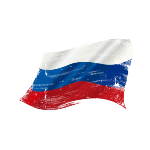 All parts of speech of the Russian language can be divided into notional (content) and functional parts. Nouns, adjectives, numerals, pronouns, verbs, participles, adverbial participles (converbs), and adverbs are notional. The functional parts of speech include prepositions, conjunctions, and particles. In this article, we will discuss what each part of speech is intended for and what features it has.
All parts of speech of the Russian language can be divided into notional (content) and functional parts. Nouns, adjectives, numerals, pronouns, verbs, participles, adverbial participles (converbs), and adverbs are notional. The functional parts of speech include prepositions, conjunctions, and particles. In this article, we will discuss what each part of speech is intended for and what features it has.
The material was prepared in cooperation with the top-rank teacher Koroshchup Lyubov Aleksandrovna. Work experience as a teacher of Russian language and literature — 30 years.
Noun
A noun is a part of speech that denotes an object and answers the questions “who?” and “what?” (“кто?”, “что?”).
A noun has notional categories: gender, number, and case. All of them are expressed with the help of declension forms. Beyond that, the noun has the category of animateness/ inanimateness, and there are proper and common nouns.
Typically, a noun functions as a subject and a direct or indirect object in a sentence.
Adjective
An adjective is a content part of speech, denoting a feature of an object and answering the questions “what?” (“какой?”, “какая?”, “какое?”, “какие?”) and “whose?” (“чей?”, “чья?”, “чьи?”) (in all genders and numbers).
Adjectives are closely related to nouns: the number, gender, and case of adjectives depend on the number, gender, and case of the noun.
Typically, adjectives perform the function of an agreed attribute or are the nominal part of a compound nominal predicate (predicative).
Numeral
A numeral is a part of speech that denotes the number of objects or the order when counting. In this regard, numerals may be cardinal (the question “how many?”) and ordinal (the question “which one?”).
Cardinal numerals may be integral, fractional, and collective. Numerals can act as different parts of the sentence.
Pronoun
A pronoun is a notional part of speech that does not name objects, features, and quantity but only refers to them.
Pronouns do not have independent features, as they borrow them from the parts of speech they relate to.
Depending on the grammatical features, pronouns perform the same syntactic function as a name that replaces a pronoun in a sentence.
Verb
A verb is a content part of speech that denotes an action or state as a process and answers the questions “what to do?” (“что делать?”) and “what will I do?” (“что сделать?”).
A verb has its own grammatical categories: aspect, voice, mood, tense, and person.
Typically, a verb acts in a sentence as a simple verbal predicate or part of a compound verbal predicate. The non-finite verb form (infinitive) often acts as a part of a compound nominal predicate.
Participle and adverbial participle (converb)
A participle is a part of speech that denotes a feature of an object in action.
A participle combines the features of a verb (aspect, voice, transitivity, reflexiveness, and tense) and an adjective (questions “what?” (“какой?”, “какая?”, etc.), as well as gender, number, and case).
Participles may be active and passive. Beyond that, there are present and past participles.
In sentences, participles usually act as attributes, less often — as predicates.
The adverbial participle (converb) is a part of speech that denotes an additive action.
The adverbial participle combines the features of a verb (aspect, voice, transitivity, reflexiveness) and adverbs (immutability).
The converb often acts as an adverbial modifier.
Some linguists believe that the participle and converbs are notional parts of speech; others think these are verb forms.
Functional parts of speech
A preposition is a functional part of speech that serves to express the relationship between words that depend on each other.
A conjunction is a functional part of speech that serves to connect homogeneous parts or simple sentences in a complex one. All conjunctions are divided into coordinating and subordinating. Conjunctions may be simple (consist of one word) and complex (consist of two or more words).
A particle is a functional part of speech that brings various shades of meaning in sentences and acts as a tool for word formation. All particles are divided into modal (express feelings), negative (express negation), and formative (serve to create verb forms).
Functional parts of speech cannot transform. Beyond that, they are not parts of the sentence.
What have we learned?
Parts of speech are divided into notional (content) and functional. Notional parts include nouns (denote an object), adjectives (denote a feature of an object), numerals (denote the number of objects or the order when counting), pronouns (refer to objects, features, and quantity), verbs (denote an action), participles (denote a feature of an object in action), adverbial participles (denote an additive action), adverbs (denote a feature of action, a feature of another feature, a feature of an object). The functional parts of speech include prepositions, conjunctions, and particles.
